The reason that The Blair Witch Project was so effective is that audiences thought that it was real; the movie had a genius viral internet marketing campaign that helped fool the public into believing that the three filmmakers were really missing and presumed dead. Unfortunately, now that the hoax has been exposed and every aspiring director with a camera has made a found footage movie, there will never be another movie like The Blair Witch Project; today’s viewers are too astute to be fooled twice. That doesn’t mean that there hasn’t been a movie like The Blair Witch Project in the past, however; in 1980, another film convinced the public that its subjects had met with horrible fates. This film, sometimes called “the most controversial movie ever made,” is Cannibal Holocaust.
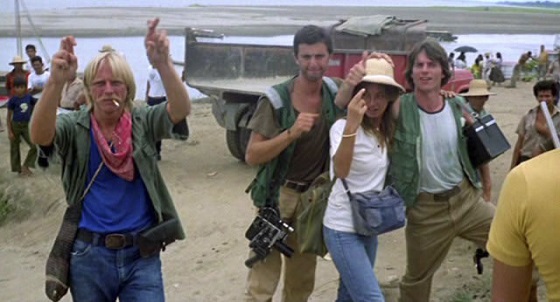
Cannibal Holocaust begins with footage of an American documentary crew that ventured into the Amazon rainforests to make a film about the cannibal tribes who live there. The crew, consisting of director Alan Yates (Jack the Bear’s Gabriel Yorke), script supervisor and Yates’ girlfriend Faye Daniels (Francesca Ciardi from Death Walks), and two cameramen named Jack Anders (City of the Living Dead’s Perry Pirkanen) and Mark Tomaso (Luca Giorgio Barbareschi from The International), never returned. An NYU anthropology professor named Harold Monroe (Robert Kerman from Eaten Alive! and Cannibal Ferox) enlists the help of a guide named Chaco (Cobra Verde’s Salvatore Basile) to help him track down the missing filmmakers. After following in the footsteps of the Yates’ team, Monroe and Chaco locate the crew’s remains in the middle of a village that is occupied by a cannibal tribe. Although the filmmakers are all confirmed dead, Monroe is able to secure the crew’s film canisters and bring them back to New York. There, he is able to assemble the footage into a horrifying and startling document of the filmmaker’s final days.
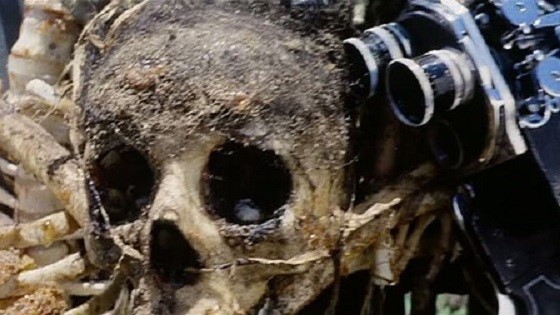
Written by Gianfranco Clerici (The New York Ripper) and directed by Ruggero Deodato (House on the Edge of the Park), Cannibal Holocaust is a tale of two movies. The first half features Monroe and Chaco venturing into the Amazon jungle in search of the missing filmmakers. When they locate the footage and get it back to New York, the second half begins; Monroe sifts through the footage and sees the horrible things that have happened to the crew. He also discovers that the team has done some horrible things of their own, and their deaths are not entirely unjustified. A film that was just ahead of its time, Cannibal Holocaust makes some bold statements about just who are the savages in the world – the cannibal tribes or the civilized people who go in search of them.
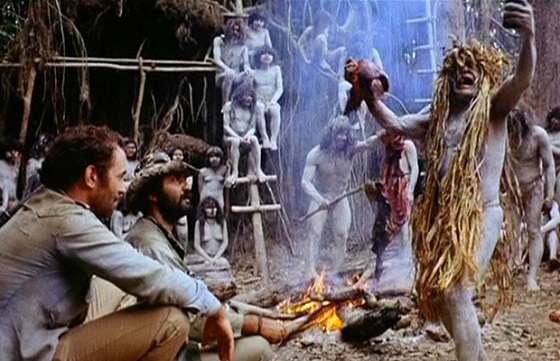
The non-found-footage segments of Cannibal Holocaust are somewhat flawed. The acting is pretty bad, the dialogue is corny, and the exposition is spoon-fed to the viewer as if they were watching a National Geographic documentary. These scenes represent something that many later found-footage films lack: an explanation as to why the footage exists. In short, Cannibal Holocaust answers the question that has plagued faux-documentary films ever since The Blair Witch Project; why were they filming? Having the production values of the background story be so inconsistent distracts a little from the impact of the film, but the cheesy first half of Cannibal Holocaust sets the viewer up well for the jaw-dropping second half.
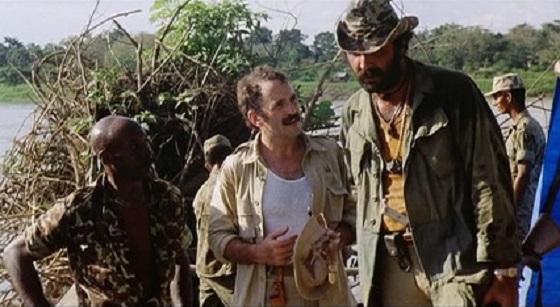
For as unconvincing as the first half of the film is, the second half is the opposite. Much of the found footage is disturbingly realistic. One of the biggest controversies of the film is the extreme animal violence; real animals were killed for the film, their slaughter captured on camera. In one of the most famous scenes, an aquatic turtle was beheaded and gutted for the camera. Monkeys, spiders, pigs, and snakes all meet similar fates in the film. Since the release of the film, Ruggero Deodato has apologized time and time again for the harm that befell the helpless animals, but the damage was done. In addition to the wildlife mutilation, the film also contains realistic depictions of sexual violence and assault. In one gruesome scene, the three male filmmakers are shown raping an indigenous girl while Faye, the lone voice of reason, pleads with them to stop. The brutal scenes of mutilation and dismemberment convinced the public that Cannibal Holocaust was real, and the public was mortified. Mortified and outraged. Cannibal Holocaust was banned just about everywhere that Deodato showed it.
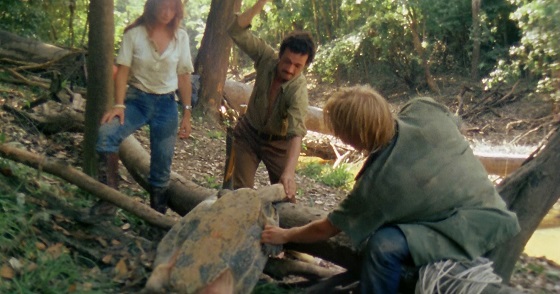
For his part, Deodato got into a lot of trouble for Cannibal Holocaust. The fact that the film was banned in many countries was the least of the director’s problems; he was actually brought up on animal cruelty and obscenity charges in Italy after the movie’s premiere. To trump up the charges, prosecutors added murder to the list of accusations, believing that the four leads had actually been killed during filming. To add authenticity to the film, the four actors signed agreements to stay out of the media in order to give the impression that they had actually died, and those agreements didn’t help Deodato’s cause at all. Eventually, Deodato had Luca Giorgio Barbareschi (who played Mark, one of the “dead” filmmakers) gather up the three other actors and show up in court, proving that they were alive. Deodato also explained in great detail how he had staged many of the more disturbing scenes in the film. The court was convinced and the murder charges were dropped. The trial was great publicity for the film, except for the fact that Cannibal Holocaust was still banned and audiences couldn’t see it, even if they wanted to. It wasn’t until years later, if at all, that countries started to slowly un-ban the film.
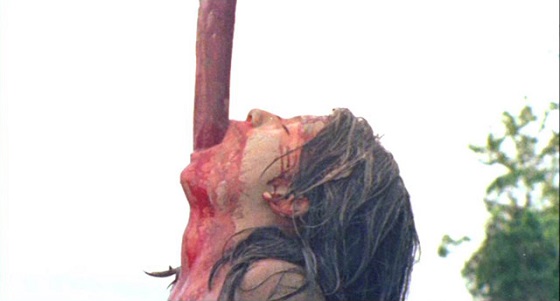
With all of the shocking visuals in Cannibal Holocaust, it’s surprising that one of the more memorable aspects of the film is its musical score. Composer Riz Ortolani was hand-picked by Ruggero Deodato because of his solid score for the shockumentary classic Mondo Cane. Ortolani’s Cannibal Holocaust soundtrack switches effortlessly from cheesy soft rock to abrasive electronic noise, sometimes standing in stark contrast to the brutality onscreen and other times reinforcing it. It’s a strange mix, partially orchestral and partially synthesized, but always interesting. Ortolani’s score is a big part of Cannibal Holocaust’s cult appeal.
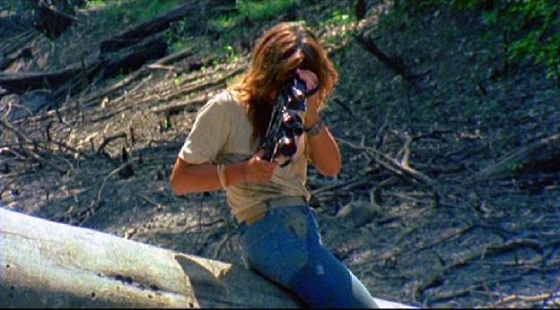
While there’s no doubt that The Blair Witch Project has been a huge influence on modern horror, it was not produced out of thin air. Cannibal Holocaust fooled the public almost twenty years earlier, and did it in a more extreme way. It’s not an easy movie to watch, especially for animal lovers, but Cannibal Holocaust is an important film in horror history.
